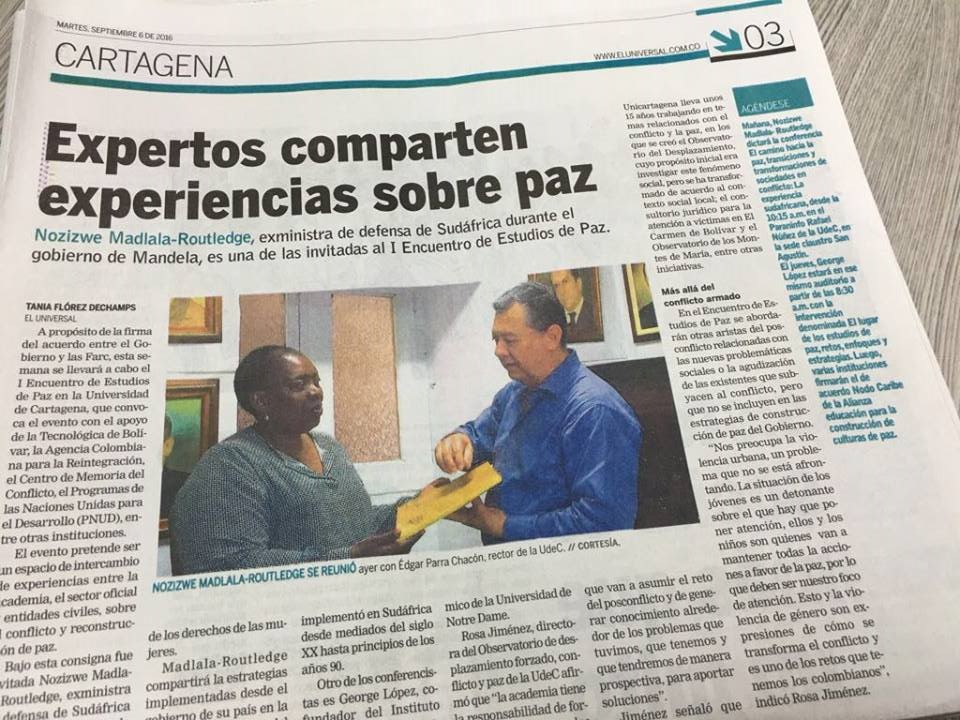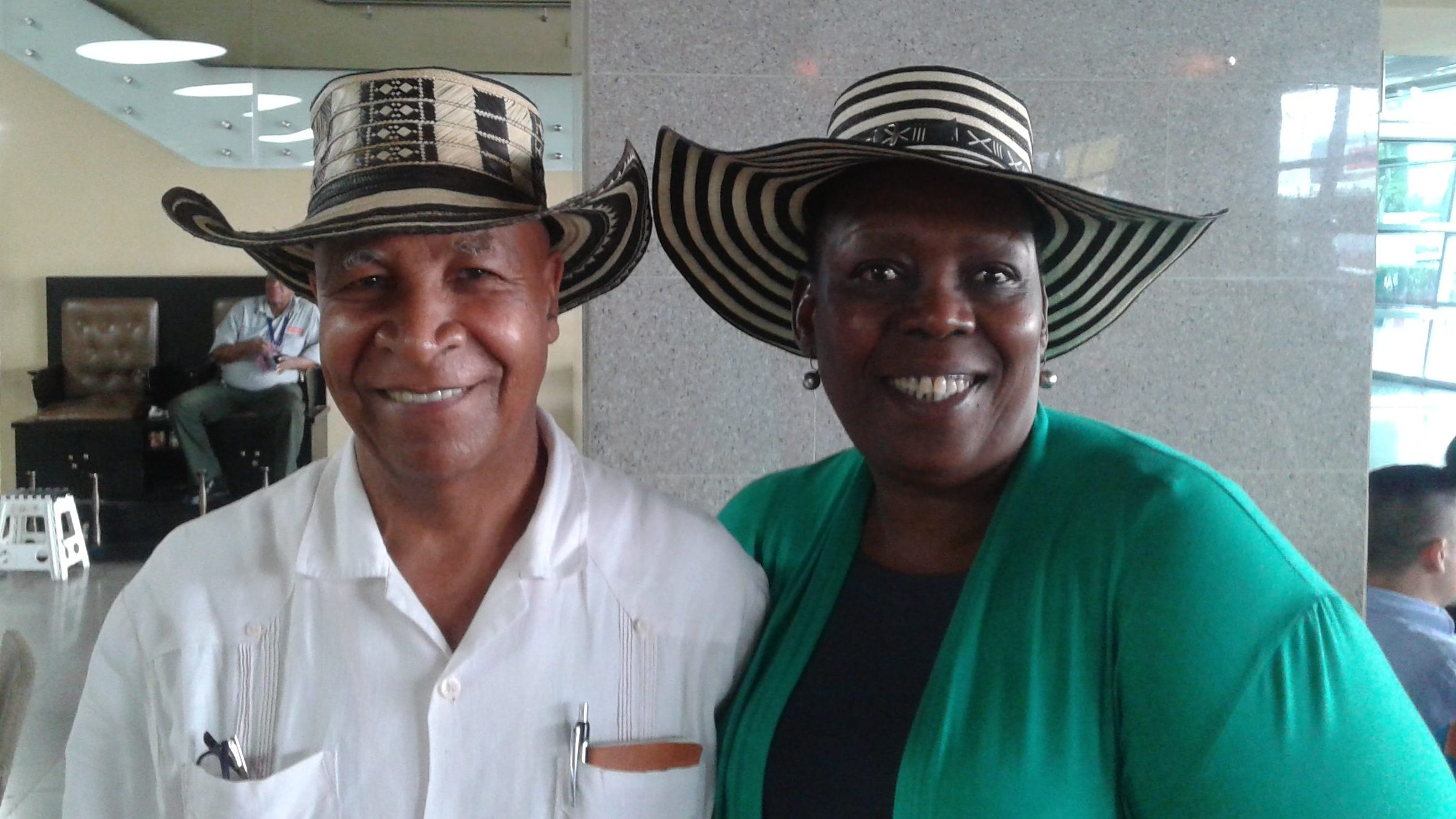
Tanenbaum Peacemakers Ricardo Esquivia and Nozizwe Madlala-Routledge
“She [Nozizwe] could speak about both things — how to end the conflict and then what comes after that…to have someone from South Africa, who came from the grassroots, but who participated in the government and the truth commission, that was really key for us. So there was a lot of interest. Not only at the university at the conference, but in general society. There were interviews on television and the newspaper and with students. Her wisdom and all her knowledge helped illuminate this path along which the country can go. It was a very precise and opportune time for her to come. And her voice of experience really contributed a lot.”
These were the words of Tanenbaum Peacemaker in Action, Ricardo Esquivia, as he described his fellow Peacemaker from South Africa, Nozizwe Madlala-Routledge’s visit to his country Colombia. An active member of the Peacemakers in Action Network (PIA Network), Ricardo hosted Nozizwe less than two months after the Peacemakers convened in New York for Tanenbaum’s sixth Working Retreat – and he noted that Nozizwe’s visit wouldn’t have been possible without Tanenbaum bringing them together.
Ricardo is the founder and director of Sembrandopaz, a nonprofit community organization “dedicated to facilitating the construction of a culture of peace building capacity among grassroots organizations in Colombia.” His wife and English translator, Lillian Hall, leads the organization’s international relations and project management coordination. In 2005, Ricardo received the Peacemakers in Action award for his lifelong work of bringing communities in conflict together to reconcile their differences and lay the groundwork for a peaceful future.
It was a critical time for Colombia. After almost fours years of brokered negotiations in Havana, Cuba, the nation was hopeful for a long-awaited peace and a more just and equitable future. Despite this, Colombia experienced a temporary setback. Just days after an historic peace accords signing between the government and the Revolutionary Armed Forces of Colombia — two sides at war for over fifty years — millions of Colombians voted “yes” to either accept or “no” to reject the peace deal in a national referendum. By an incredibly narrow margin (50.2 % voting “no”; 49.8% voting “yes”), the people of Colombia, galvanized by former President Alvaro Uribe’s “no” campaign, rejected the peace deal.
In the days leading up to the referendum, Nozizwe visited Colombia and delivered the keynote speech at the 1st International Peace Studies Conference at the University of Cartagena. After spending her first few days in Cartagena for the conference, Nozizwe traveled with her hosts to Sembrandopaz’s offices in Sincelejo, to speak with individuals living in rural communities. Along the way, the Peacemakers visited an Afro community in Mampuján, which led to some special moments.
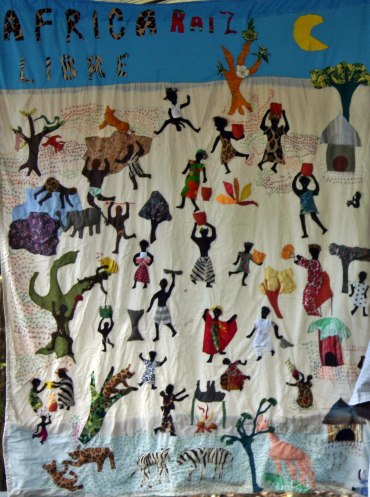
“African Roots” Quilt. From Mampuján, Colombia
Sembrandopaz works closely with Mampuján, an afro community that was displaced in 2000 by Colombian paramilitaries. The community is still unable to return to its land. However, as the first community in Colombia to receive its reparations as victims of the armed conflict, they are “emblematic” of how justice is being realized in Colombia. In Mampuján, women address the community’s painful past by weaving applique quilts that visually narrate their experiences, including massacres and displacement, as well as their African roots. When the Afro-Colombian women received a visit from Nozizwe, a South African woman who had struggled with armed conflict and the difficult transition to peace, there was an immediate sense of unity. Wanting Nozizwe “to take back a piece of Mampuján” to South Africa, the women created an applique for one of Nozizwe’s dresses. In turn, Nozizwe taught the women a South African song in Zulu, “a special moment in which the Afro people of Colombia felt themselves transported to Mother Africa.”
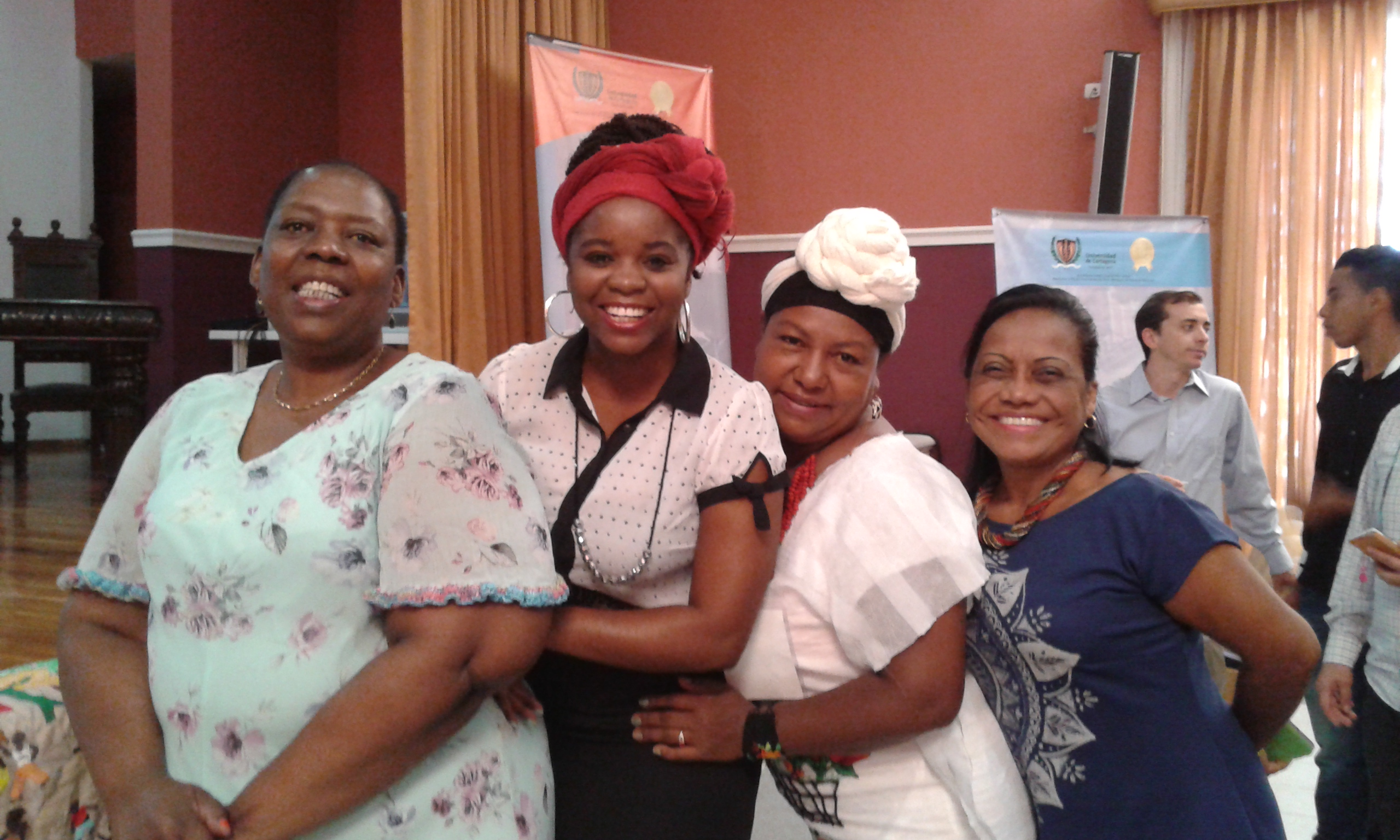
Tanenbaum Peacemaker Nozizwe Madlala-Routledge (left) in Colombia
Everywhere Nozizwe went, she touched people with her message of peace. There was a heartfelt connection between Nozizwe and a young woman from Zambia, Lweendo, a Sembrandopaz volunteer, (during Apartheid, Zambia opened its borders to fleeing refugees from South Africa), as well as a young Afro-Colombian staff member from Colombia named Yesica. Ricardo described how Yesica and Lweendo shared similar dreams in their work toward peace and reconciliation – and so they were profoundly inspired by Nozizwe and her role in South Africa’s peace process.
In Sincelejo, Nozizwe met with women from five different communities Sembrandopaz works with — Alta Montaña, Libertad, Mampuján, Pichilín, and San Jacinto — as well as peasant leaders and a group of local peacemakers. Many of the women Nozizwe spoke with were of Afro-Colombian descent, “women who have lived [Colombia’s] armed conflict in different ways.” Nozizwe listened to the problems they face in their communities (e.g., access to education, employment and birth control). And Nozizwe responded by encouraging the women to use their talents and skills to create “a new society of peace.” Nozizwe spoke to the similar experience of women in South Africa, who were organized and worked together to effect change in their country. While working with others toward peace, Nozizwe described how she developed leadership skills, and she stressed to the importance of visualizing hopes for the future. Nozizwe also encouraged the women to network with other women in their communities.
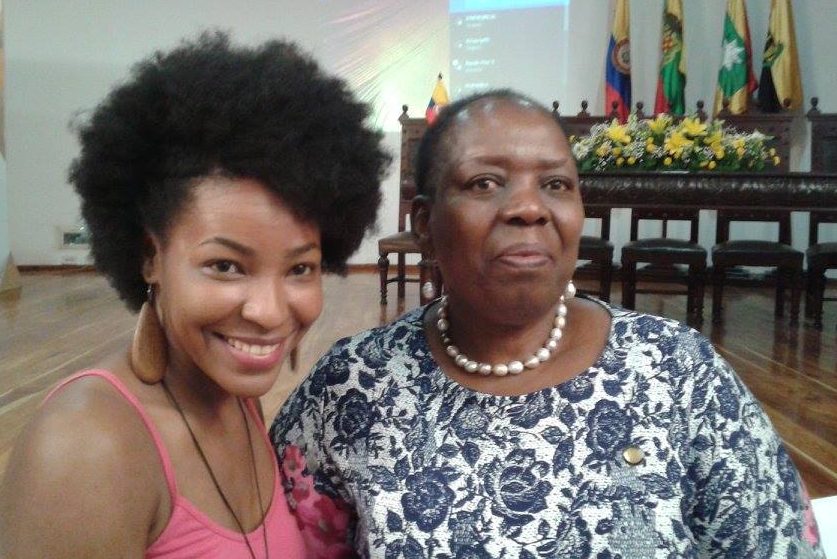
Yesica Blanco of Sembrandopaz (left) with Peacemaker Nozizwe Madlala-Routledge in Cartagena, Colombia
Nozizwe also engaged with broader civil society. During a moving encounter, she listened to an ex-combatant who had demobilized ten years ago and now works with an entire network of women ex-combatants. After a tearful embrace, Nozizwe called her “my sister.”
Thanks to fortuitous timing, Nozizwe’s impact also reached beyond the local community level. Just prior to Nozizwe’s to visit to Mampuján, Colombia’s First Lady, María Clemencia, had met with the same women who weave the storytelling applique quilts. (In fact, the women have been asked by the Colombian government’s high peace commissioner’s office to create an enormous quilt which will contain what the peace accords will look like in people’s lives, with all six points of the peace accords represented.) The First Lady was told about Nozizwe’s upcoming visit and this led to a formal request from the office of President Juan Manuel Santos office for Nozizwe to deliver a videotaped message of peace for the Colombian people. The importance of Nozizwe’s work in South Africa, and the hope her message carries, was apparent to all parts of society, including the President.
Despite the disappointing setback of the failed referendum, Ricardo and Sembrandopaz’s work continues. They have been practicing their vision of peace for twenty-five years in what Ricardo describes as a “post-conflict period.” Nozizwe’s visit to Colombia was short but her presence was undoubtedly felt by those she met.

“Secuestro” (Kidnapping). Quilt. From Mampuján, Colombia
For Ricardo, however, this was more than a visit from his fellow Peacemaker in Action, “it was an opening.” Nozizwe has already invited her new friends from Mampuján to come to South Africa to share their stories; and she encouraged one of the young Sembrandopaz staff members to participate in a leadership program at a local university in Johannesburg. The community members who had the joy of meeting and talking with Nozizwe reciprocated; they extended Nozizwe an open invitation to return to Colombia.
Two Peacemakers inspire hope for a peaceful Colombia – oceans apart – but near in their shared vision for peace. And their work together will continue.
By Michael McShane
Peacemakers in Action Network Coordinator, Tanenbaum
